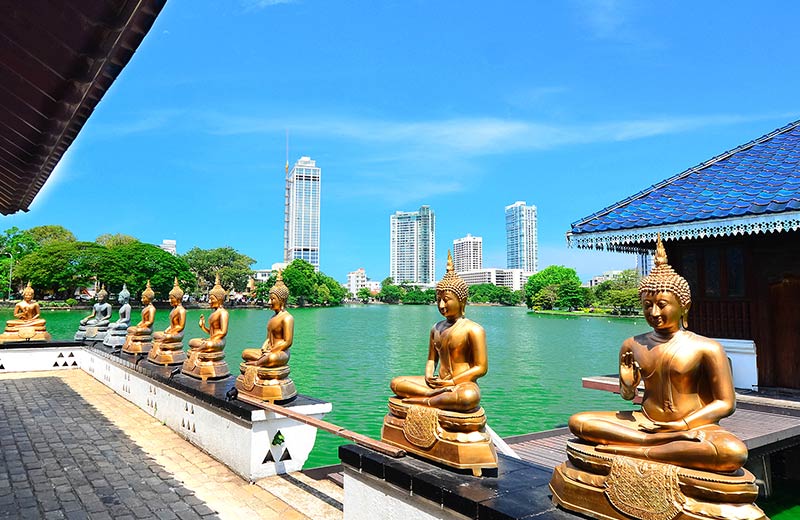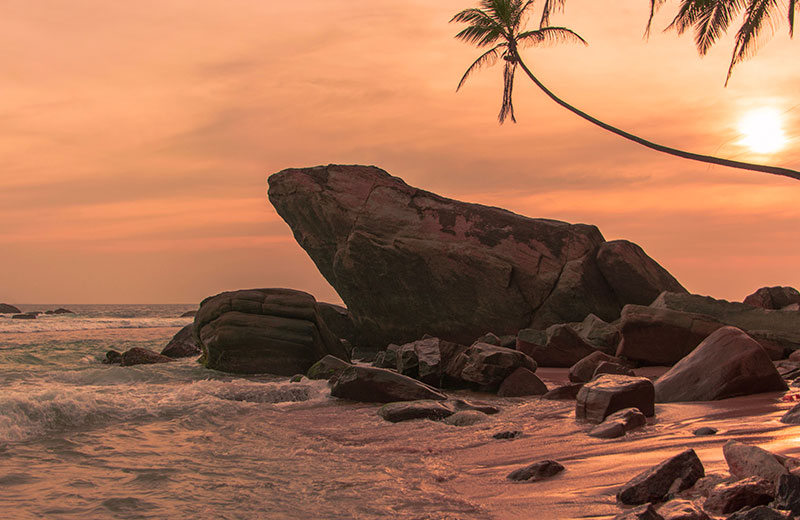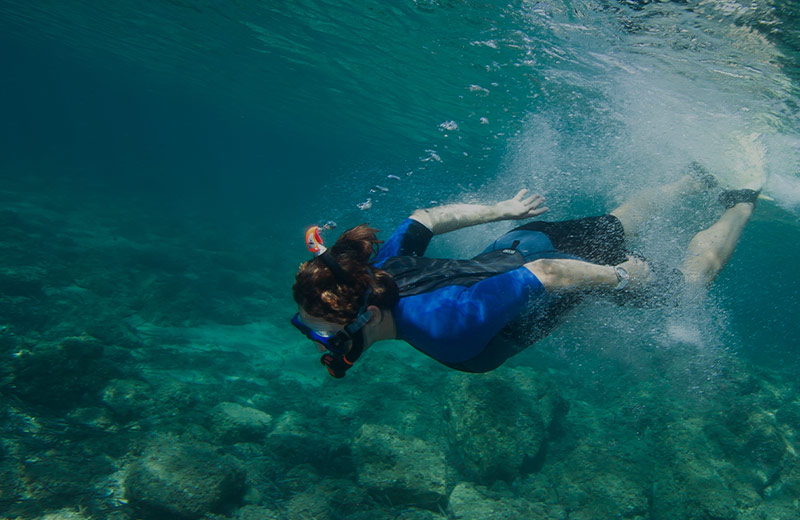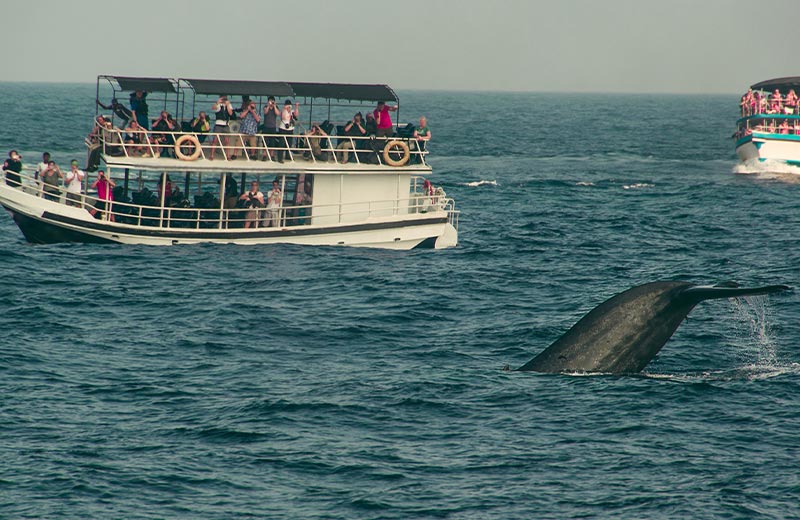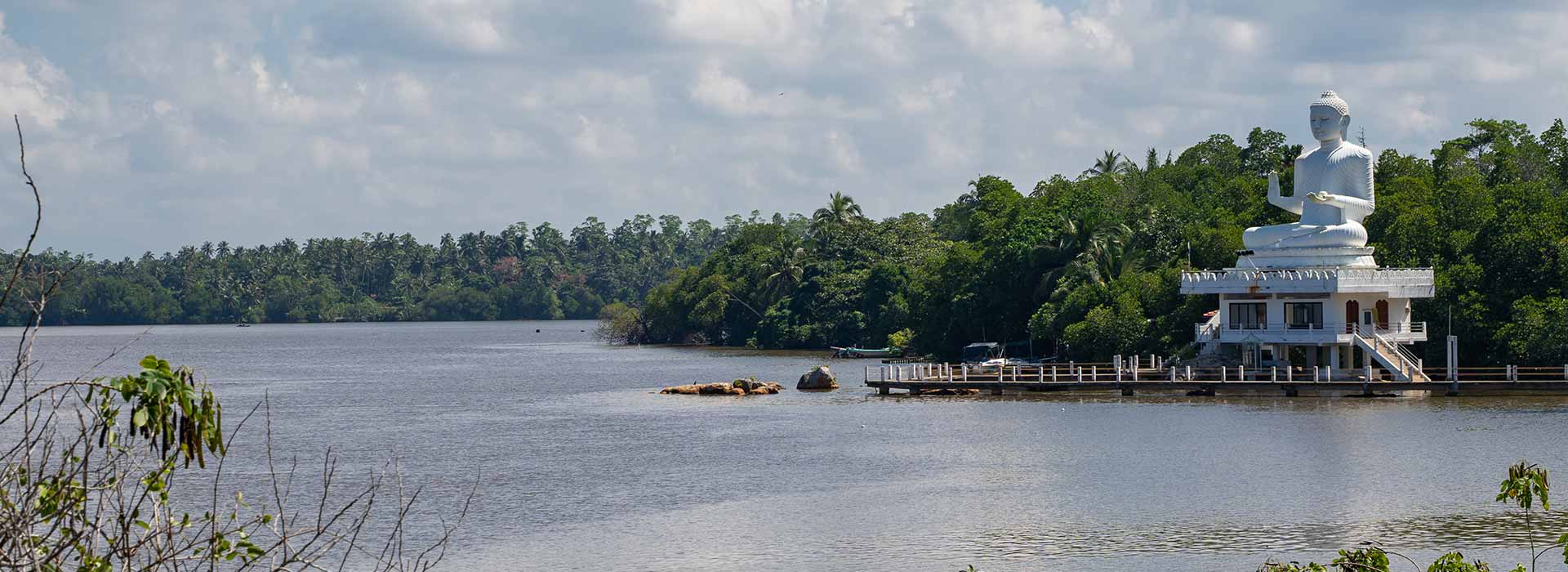A Demon That Roamed the Benthara River
One of the earliest tales associated with Bentota is directly linked to the name the town was given back in the day – Bemtota. The vast Benthara River is one of the most significant attractions of the town. According to legend, long ago, when the ancient tribes of the Yakka, Naga, Devas and Raksha roamed the land of Lanka, many who would attempt crossing the river would never be seen again. These disappearances were attributed to a demon known as Bemrakusa who is supposed to have ruled the river bank. The legend further states that those who wished to avoid encountering the Bemrakusa would seek protection from deities such as Vishnu and Kataragama Deviyo before attempting to cross the river. The lore was so popular that the original name of the town ‘Bemtota’ was derived from this infamous demon.
The Ancient Galapatha Raja Maha Viharaya
Bentota is home to at least five ancient temples, of which the most significant is probably the Benthara Galapatha Raja Maha Viharaya. Some sources claim that the temple was gifted to the people of Bentota by King Parakramabahu the Great in the 12th century AD.
It is believed that the Benthara Galapatha Raja Maha Viharaya was once a massive complex that included five other temples spread out across an area of six square kilometres. The Portuguese, who took control of many coastal areas of the island in the 16th century, raided and destroyed much of the temple complex in 1568. The monks and the people of the region rallied together to rebuild the temple, staying true to as much of the original design as possible, with a few new additions. Today, it is a protected archaeological monument and an important place of worship for Buddhist devotees.
Some of the more significant features of the temple are the main dagoba and its entrance. The artistic carvings that adorn the sides of the entrance showcase the skills of the ancient craftsmen. The wood carved Nari Latha motifs are believed to stem from the Kandyan period and is supposed to have been inspired by a myth from the Himalayas. The main dagoba houses an ancient tooth relic that belonged to Sri Anubuddha Maha Kassyapa Arahat, a disciple of Lord buddha. There are also several murals that depict scenes from the Jataka Tales (tales that narrate the previous lives of the Lord Buddha).
Bentota During the Colonial Era
After accidently arriving in Sri Lanka in 1505, the Portuguese soon realized that the island was teeming with goods that were ideal for trade. The Europeans exploited the troubled politics of the native kingdom and slowly established their presence in the island. As the Portuguese took control of trade on the island, they began building forts around the country, anticipating interference from other European powers who would come to learn of the lucrative opportunities available in Sri Lanka. The small fortification built in Bentota was known as the ‘Parangi Kotuwa’ by the locals, and it is believed to have stood in the area occupied by the Bentota Beach Hotel today.
The Portuguese used this as a primary fortress to protect their interests in the southern coast, however, that all changed when the Dutch colonisers seized the maritime areas of the island in the 17th century. The Dutch were much more strategic in controlling their trade, thus they only fortified locations that were significant to their commercial activity. The Portuguese fort in Bentota, being strategically unimportant to the Dutch was eventually transformed into a respite for colonials and travellers. A part of the ‘Parangi Kotuwa’ was turned into a quaint Dutch Rest House where many weary travellers would often break journey on their way to the strategic fort in Galle, located further south along the coast.
Bentota – The Holiday Town
The British eventually took control of the island’s trade from the Dutch in the 19th century, and with it control of the forts and buildings occupied by them. It was during this time that the Rest House in Bentota grew in popularity amongst the colonials, who favoured it as a holiday spot.
Sir James Emerson Tennent, who was the Colonial Secretary of Ceylon in the mid-19th century, wrote about the Bentota Rest House saying it was ‘the coolest and most agreeable place in Sri Lanka’. Another 19th century visitor, German zoologist Ernst Haeckel, wrote of the place “the rest-house is beautifully situated on a hill among tall tamarind trees and has a splendid view over the sunlit sea and the bridge which spans the river-mouth.” The place also became famous for oyster fishing during the colonial period. The oysters were frequently sent to Colombo, where they were considered a luxury item by the colonials, or consumed by those who visited Bentota and stayed at the Rest House.
Today the colonial era Bentota Rest House no longer exists. The Geoffrey Bawa designed Bentota Beach Hotel replaced it in the 1960s. Paying homage to the location’s colonial history, elements of Bawa’s design for the hotel mimicked old Dutch fortifications.
Tourist Destination
The place that people dreaded to pass through in fear of the Bemrakusa many years ago, the town of Bentota has now become a popular holiday destination for local and foreign tourists. The opening of the National Holiday Resort Complex here in the 1970s drove many tourism development initiatives, most of which sustain the town in the modern day.
In keeping with the peaceful, serene and beautiful atmosphere created by the Bentota Rest House of old, the town is home to a number of boutique style villas that offer comfort, luxury and charm to those who visit this holiday hot spot today.


